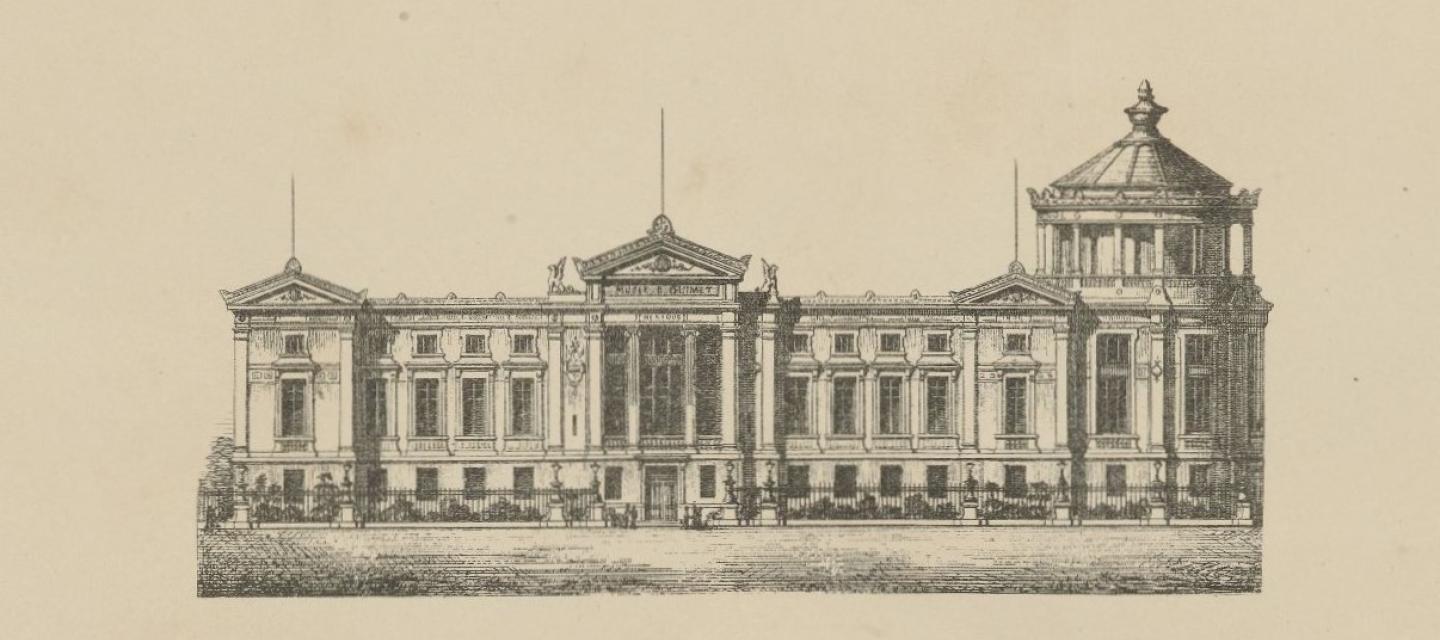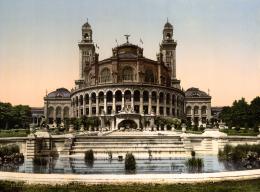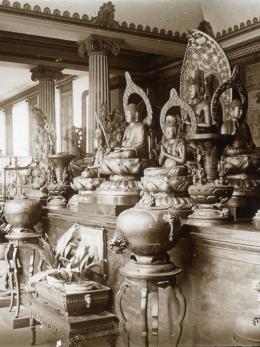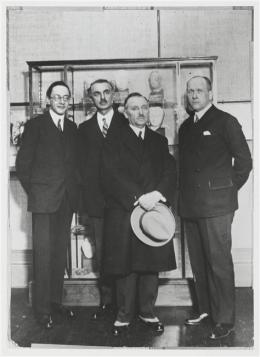
History of the Museum
From Lyon to Paris
First established in Lyon and then transferred to Paris in the building Émile Guimet had raised on the hill of Chaillot, the historic building on the Place d’Iéna arose from his vast project to create a museum of religions in the wake of his pivotal travels in Egypt.
Fascinated by the East and its civilisations, he assembled there his outstanding collections, notably the ones he brought back from his travels in Japan, China, and India in 1876-1877.
The collection extends throughout Asia
Émile Guimet was not the only one to be interested in Asia, as we can see by the study and exploration missions of Victor Collin de Plancy and Charles Varat in Korea in 1889, the expeditions of Louis Delaporte in Cambodia in 1873 and 1880, Paul Pelliot’s mission in China and Central Asia in 1906-1909, or again those of Jacques Bacot in Tibet or Alfred Foucher in India and Afghanistan.
These missions led to outstandingly significant scientific works that contributed to the recognition of these civilisations in the Western world between the late 19th and early 20th centuries.

©David Giancatarina
Escaliers du musée Guimet
As of the 1920s their discoveries would enrich the Musée Guimet collections, then completed by those of the archaeologists Joseph Hackin for Afghanistan and the art historian Philippe Stern for Cambodia and Champa (Vietnam), thanks to their relations with the French Archaeological Delegation in Afghanistan (DAFA) and the École française d’Extrême-Orient (EFEO).
The Museum hosts the collections of the Louvre
In 1945, in the context of a vast reorganisation of the French national collections, the Musée Guimet received part of those of the Musée du Louvre (including the prestigious Grandidier Collection), thereby becoming one of the leading Asian arts museums in the world.
Laid out since 1938 around the “Khmer courtyard” and Émile Guimet’s superb library listed as “Monument historique”, in 1996 the museum undertook a vast renovation programme conducted by the French architects Henri and Bruno Gaudin. The focus was on natural light, the creation of sweeping perspectives and a panoramic terrace overlooking Paris. Accessed by a monumental staircase, the new museum was inaugurated in 2001 by the President Jacques Chirac.
Today the Musée Guimet entertains close ties of scientific and technical collaboration with the leading museums in Asia an through the temporary exhibitions it organises or in which it participates in Paris and all over the world contributes to a greater closeness between civilisations, peoples and beliefs, in keeping with its founder’s wishes.
Two other sites have also been attached to the Musée Guimet: the Musée d’Ennery in 1908 as well as the Hôtel d’Heidelbach in 1991.
The Musée Guimet's collections have steadily grown since its creation in 1889. Nowadays it is one of the few institutions in the world where the public can discover masterpieces from the whole Asian continent, from Afghanistan to Japan.

The Louis Delaporte expeditions in Siam and Cambodia are at the origin of a Khmer art collection which formed the core of the Trocadero's Indochinese Museum, founded in 1882. At the end of the 19th century, the Objets d'art collection of the Louvre dedicated a section to Asian art, mainly from China ad Japan, which later became the department of Asian art.

In 1889, Émile Guimet inaugurated a building nearly identical to the one he had built in Lyon. He donated all his collections to the French State and became the Director of a brand new museum which housed his Asian collections as well as objects from Egypt, Greek and Roman Antiquity and Native America.

As per Clémence d'Ennery's bequest, the museum and its collections were donated to the French State and joined to Musée Guimet.

The Musée Guimet joined the Direction of French Museums. It received the collections originating from Southeastern and Chinese French expeditions as well as artworks housed in the Trocadero's Indochinese Museum.

From 1945, the Musée Guimet sent its Egyptian collections to the Louvre and was the recipient of the collections of the department of Asian art in return. It therefore became one of the premier museums of Asian art in the world.

The building, acquired by the Ministry of national Education in 1955, was finally attributed to the Musée Guimet and renovated.

A fully revamped museum with larger exhibition spaces reopened in early 2001, offering a journey across Asia over 5500 sq. meters.
